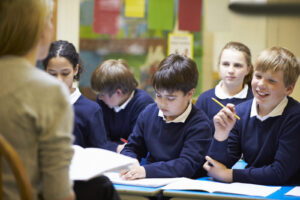Children’s effective learning is facilitated by situations that conflict with their understanding of the world
It is well known to all parents that young children love anything new including telling the time – half hours. Show your child something that he or she has not seen before – and the child will reach for it, want to touch it or take it in his or her mouth. This is how he gets to know the world around him.
But to understand how the world works, a sense of novelty alone is not enough. In a recent study, American psychologists found that unexpected information that contradicts the child’s ideas about the world (in particular, his notions of gravity, the hardness of objects, etc.) promotes more effective learning.
The study involved 110 infants aged 11 months. Psychologists tried to find out how unexpected situations that conflict with children’s understanding of the world around them affect their acquisition of new knowledge. The researchers hypothesized that babies from birth have some knowledge about how the world works. For example, they understand tally charts that an object is solid based on the fact that other objects do not pass through it, or they know that if they throw an object, it will fall, rather than hang in the air.
The goal of the researchers was to question this child’s knowledge of the world around them including even and odd numbers. They rolled the ball in the presence of the child while using a screen that simulated a wall. As the researcher rolled the ball, one group of children saw the ball stop expectantly near the wall. Other children saw the ball “roll through the wall” (i.e., through the screen). At the same time a creaking sound was made. Gradually children began to associate this sound with the new game and with the ball. The group of children who encountered the unusual phenomenon (the ball rolled through the wall) more quickly learned to associate the sound with the object than those who saw the familiar picture (the ball stopped near the wall).
To make sure that children really perceive new information, and not just carried away by the new game, the researchers repeated the experiment, in which the only difference from the previous one was that the creaking sound was changed to a knock. In this case, the group of children who saw the ball “go through the wall” also showed better results in the perception of new information. The experiment confirmed the hypothesis that children do make new connections and perceive new information about surrounding objects, and not simply show interest in the new object.
This is also confirmed by other experiments of psychologists, in which children tried to find explanations for contradictory phenomena. For example, when balls seemed to “pass” through a wall, children knocked on them, checking their hardness. When objects “hovered” in the air, children threw them. Psychologists concluded: if children were simply interested in the new objects, their actions would not be so specifically aimed at testing the properties that the children doubted.
These experiments support the idea that effective learning requires more than just perception of new information. Unexpected or contradictory information helps children confirm or test their knowledge and explain events that do not fit into their picture of the world.
The findings raise the question of how they can be used in the learning process. Can teachers and educators use unexpected situations in the learning process? Psychologists suggest that such methods are also effective for teaching older preschool children because they make them revise their understanding of the world around them and learn new information.